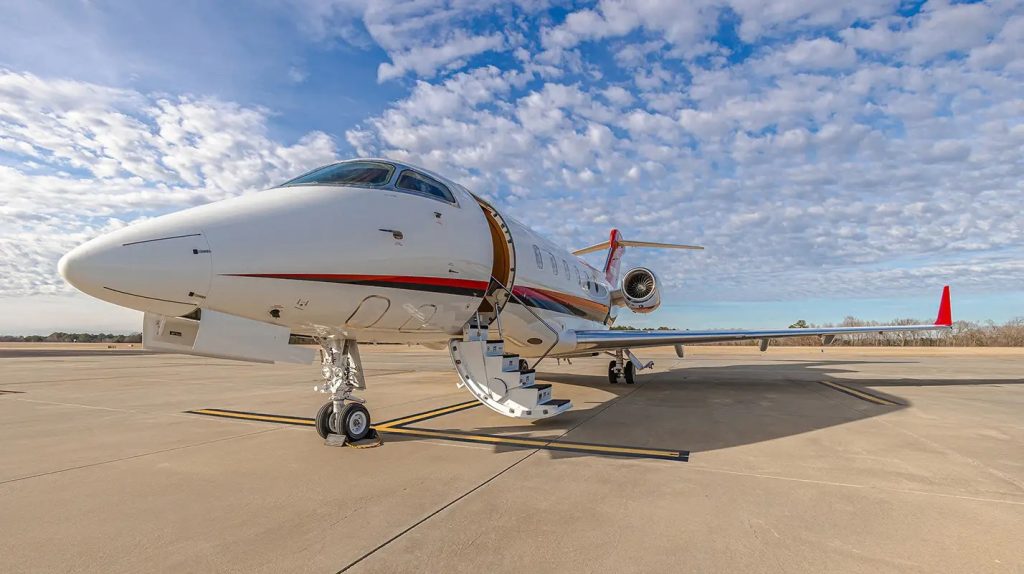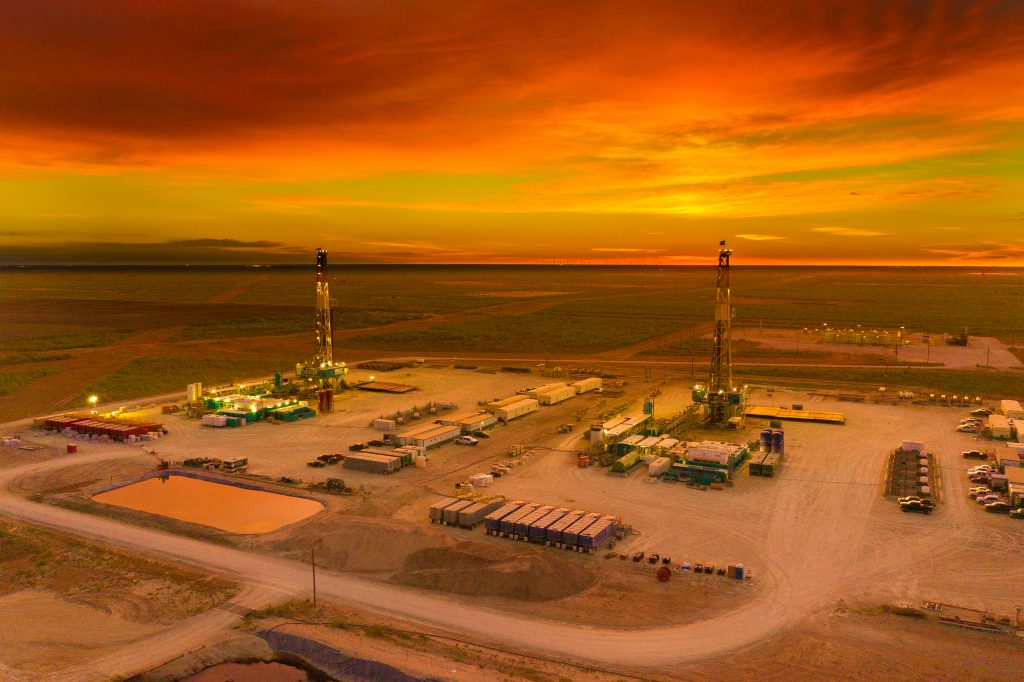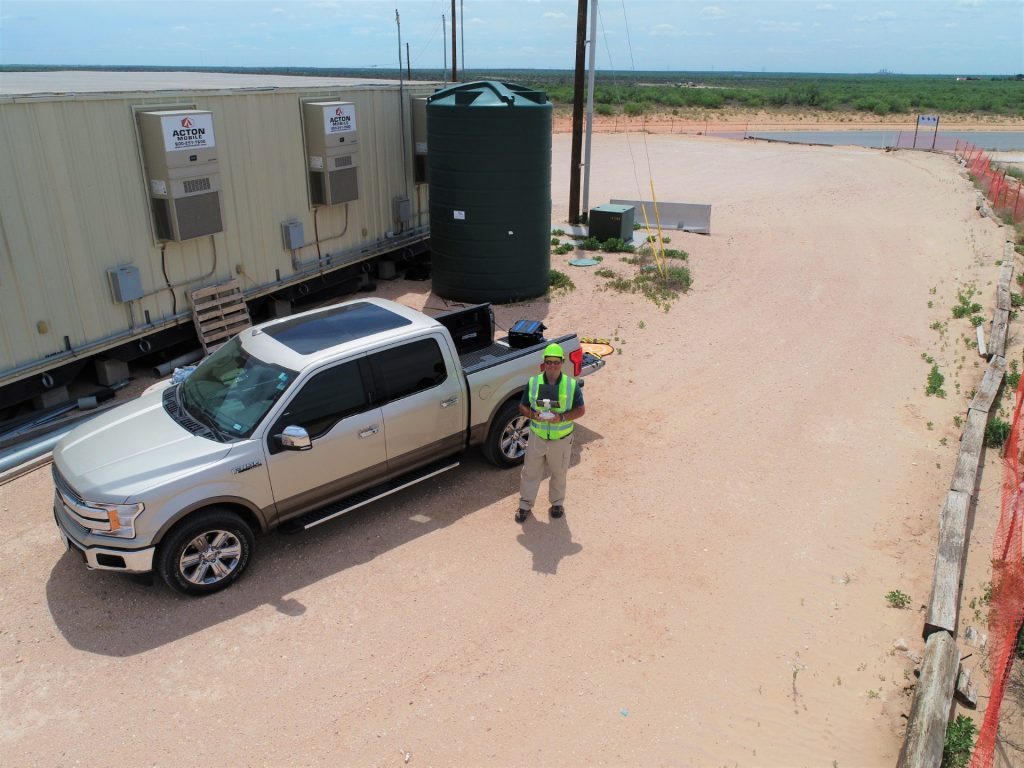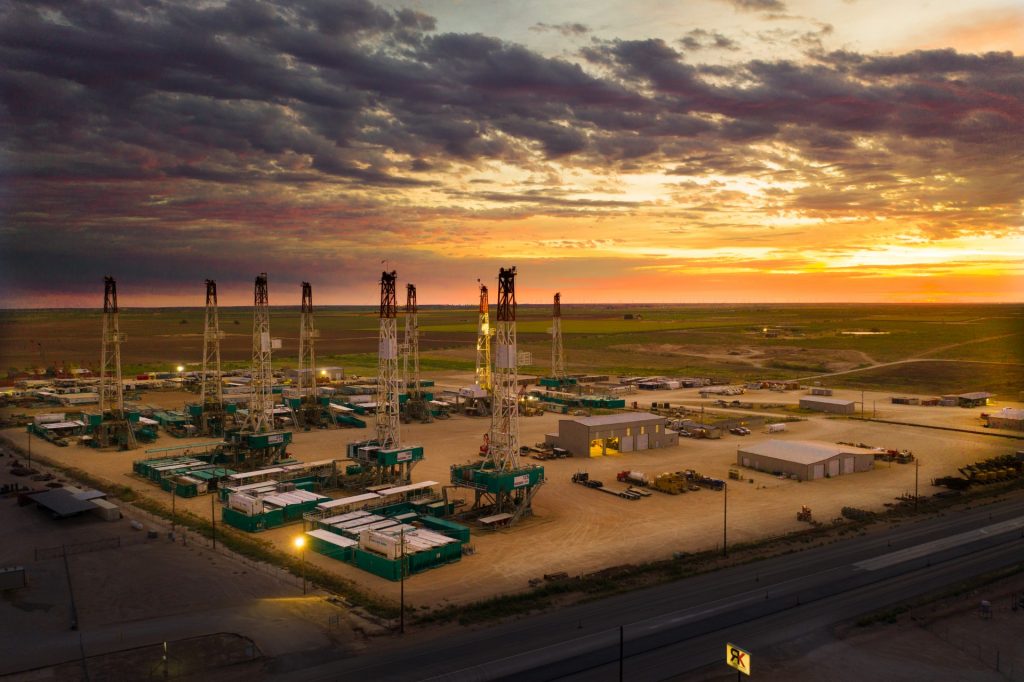How much does Permian Basin oilfield activity affect Basin aviation activity?
It’s pretty much a direct, non-stop connection.
According to Justine Ruff, director of airports at the Midland International Air and Space Port, “enplanements” are up exponentially right now.

NicholasAir owns and operates its own fleet, employs its own pilots, and maintains an average aircraft age of only 5 years.
An enplanement, per the definition she gave, is “a passenger getting on an airplane and flying out.”
So, given this exponential increase, it’s clear that “oilfield traffic here is having a positive effect on the airport,” Ruff said.
Now, the way that the oil traffic affects the commercial side of the airport is that all of the grants the airport receives are based on the number of enplanements.
“So, when you buy an airline ticket, there’s a ticket tax put on that, and the ticket tax goes to Washington, and it’s put in a fund that’s not supposed to be able to be raided for anything else, and that money is divvied out to all the airports at the end of the year in the form of grants based on your number of enplanements,” Ruff said.
Ruff’s responsibilities lie within the realm of commercial aviation, not general aviation, but just the same, she acknowledged that oilfield-related air traffic has had a positive impact on the airport in both areas. As for the commercial side, Ruff said that “We have a lot of people in this area who work here, but maybe don’t live here, and those people tend to fly out on the weekends. But they park in our parking lot, they fly on our aircraft, and therefore it’s a huge benefit for the airport.”
Midland International connects commercially to both Dallas airports and both Houston airports, as well as to Austin, Denver, Phoenix, and Las Vegas. Its commercial carriers include Southwest, American, and United, and Delta is scheduled to begin service to and from Midland International this month.

Sometimes the assignment for a drone pilot is to capture a picturesque image of an oilfield pad or installation, for marketing purposes. This image captured by Permian Basin Drone Services.
The General Picture
Meanwhile, on the general aviation side, services run the gamut from large private jets to small fixed wing and rotary wing craft, many if not most of which cater to the oilfield professional.
Nicholas Air, based in Oxford, Mississippi, does a lot of business in and out of Midland International and other Permian Basin airports. In a prepared statement, Nicholas Air reported that private aviation has “seen a great spike in demand over the past 36 months.”
Considered a “boutique” private jet company, Nicholas Air is in its 26th year. Founder and CEO Nicholas Correnti has said that “We are very smart about deploying our resources and very tactical about how we approach the market. We research, we analyze, we make decisions that are financially sound from the onset so that you don’t become overexposed. The industry overall is notorious for chasing the next big thing and spending big dollars in that pursuit, but that is not part of our DNA here. Our company has been built, is built, and always will be built on financial security and stability.”
The Smallest Craft

Drone pilot Jamie Linderman works the controls of one of his quadcopters, aiming the lens back at himself.
At the far extreme of aviation—far as one can get from not just commercial carriers but even the smallest two-seaters—there is the now-burgeoning field of unmanned aviation, this being the world of drones and their ilk.
PB Oil and Gas Magazine caught up with drone pilot Jamie Linderman by phone as he was driving to an assignment near Jal, N.M., at the behest of Halliburton.
Linderman is owner and chief pilot at Permian Basin Drone Services, which maintains a page by that title on Facebook. Just the same, this, for him, is a sideline. His “day job” is working as a pilot for Southwest Airlines.
In the drone work, Linderman flies a DJI Phantom 4 Pro and a DJI Mavic 2 Pro—both of them quadcopters. He does a variety of jobs for his clients: mapping, photo reconnaissance, and marketing work are three of the most common assignments.
“A lot of the work is getting the current status of sites,” Linderman said. “People want an updated picture of their locations, because there’s only so much you can get from Google Maps, and you have no idea how old that data is.”
Within the past year, his drone work “has actually gotten busier” and he’s increasingly doing work that is farther out of Midland proper (which is his home base) than he has in the past. In places like Jal, for instance.
He also does assignments for real estate professionals.
His oilfield work has picked up. “I think the word’s been getting out a bit more,” he said. “And I’ve teamed up with a company called Trunk Line, which markets itself as kind of an online one-stop shop for oilfield related products and services. We did some coverage [from the air] of a job where workers were swapping out out an engine on a compressor station, for instance.”
Linderman can also chart the work progress on a certain site. “Once I go out and fly a certain route, I can set that up to where I can come back at whatever interval—a week later, two weeks, a month, whatever—and fly the exact same route [shooting photography].”
Looking Ahead
Big or small, manned or unmanned, aircraft is taking to the skies above the Permian Basin in larger numbers than ever. The Basin itself is a big space, with lots of empty expanses betwixt and between the settled spaces as well as between the work sites. And with alacrity being the name of the game, quick hops between locations is the order of the day. But aviation businesses should prove equal to the task. There wouldn’t be a Permian Basin—not one such as we know today—without them.










